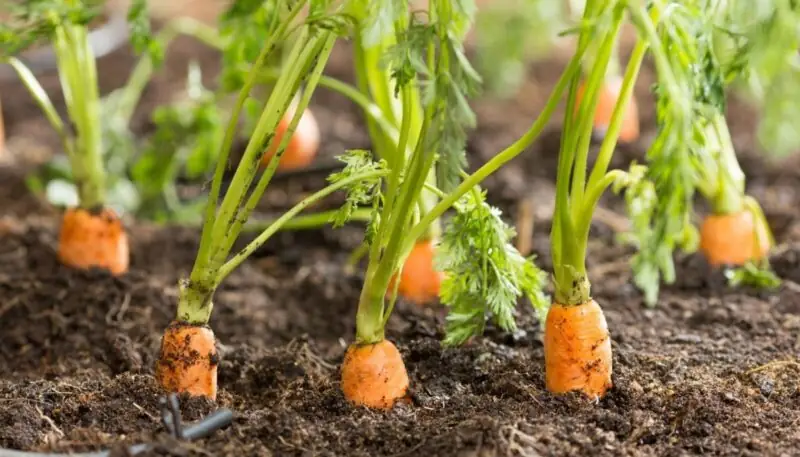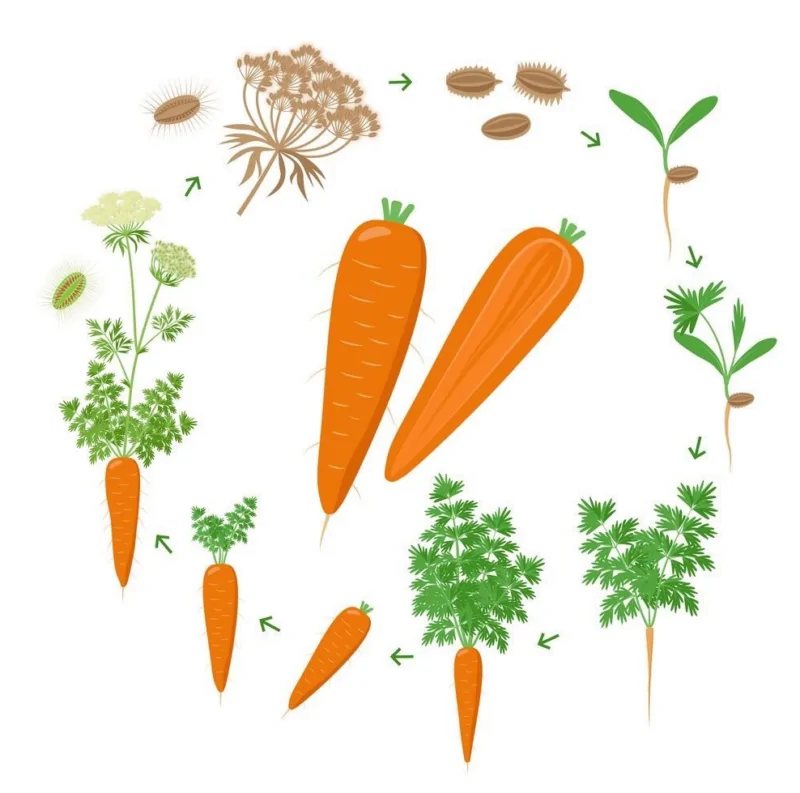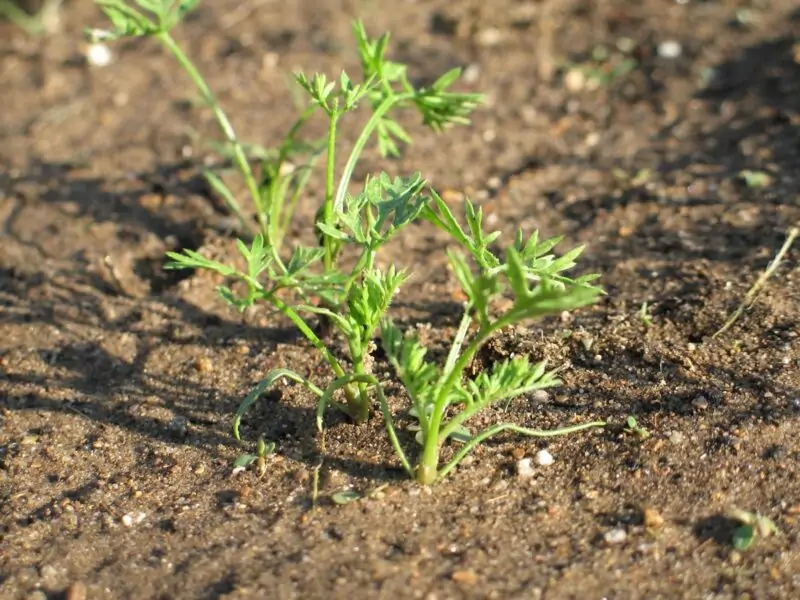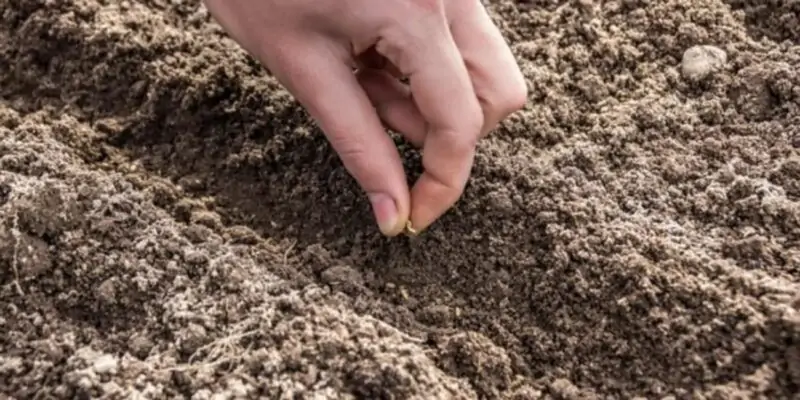What Do Carrot Sprouts Look Like: Guide to Carrot Growing

Have you ever planted carrot seeds and found yourself wondering what do carrot sprouts look like? Don’t worry, it’s a common question. Identifying carrot sprouts can be tricky, especially if you’re not familiar with the early stages of their growth.
In this article, we’ll walk you through everything you need to know about recognizing and growing carrot sprouts. We’ve included some handy tips for distinguishing them from weeds and grass too! So let’s get started!
Growing Carrots from Seeds: Seed Leaves and True Leaves

Carrots are an easy vegetable to grow at home, but identifying their tiny seedlings can be quite challenging. The first thing to keep in mind is that carrots take time to germinate – usually between 14-21 days under optimal conditions.
Once they start germinating, there are four distinct stages of growth: germination stage (stage 1), first leaves from the seeds/cotyledons (stage 2), the first set of true leaves (stage 3), and the second set of true leaves/maturity stage (stage 4).
Stage 1: Germination
During this stage, little or no greenery will emerge above soil level just yet, as only roots work themselves downward into the planting bed seeking moisture.
Stage 2: Seed Leaves (cotyledon)
After several days since sowing seeds on the topsoil surface, two thin elongated white cotyledonary structures resembling blades tend to pop out beneath the soil surface, followed by a single slender stem with scarcely any noticeable branches until the later maturity phase.
Stage 3: First Set of True Leaves
This is when things begin looking more plant-like; after approximately three weeks or so since initially planting your seeds, small clumps containing anywhere from one to three narrow oblong-shaped bright green leafy spurs may break ground, indicating progress towards the maturity phase still ahead.
Stage 4: Second Set of True Leaves and Maturity Phase
The final developmental milestone involves full maturation and reaching their prime, at which time leaves become a richer shade of green with increased width along the length.
Learn How to Identify Carrot Sprouts

The best way to describe carrot sprouts is that they look like tiny blades of grass initially. The first set looks almost identical to some weed species such as crabgrass or quackgrass.
Differentiating Carrot Seed Leaves and True Leaves
So how do you tell them apart? It’s in the number – only one leaf will emerge from each carrot seed when germinated, while 2-4 shoots appear on most weeds.
Smell: A Clue to Identify Carrot Sprouts
If you’re still not sure whether what has emerged are carrots, crush a few leaves between your fingers and give them a sniff! If it smells like carrots – then congratulations! No weed or grass can smell that way, so this test is quite reliable.
Differences Between Carrot Sprouts and Grass and Weeds
Now that we know how to identify the very first carrot leaves, let’s find out how to differentiate other nearby growths from these tender beauties.
Leaf Shape and Growth Patterns:
Carrots have a long, lanky, narrow growth pattern where individual stalk-like spurs grow directly upward; typically, counterfeits comprise clusters spreading out horizontally across the soil surface resembling crabgrass in shape.
Grass vs. Carrot Sprout Differences:
Although similar at first glance, many differences separate healthy developing vegetable seedlings from undesirable wild vegetation; characteristics including coloring, thickness, and height can help distinguish young plant species more accurately.
Dealing With Weeds While Growing Your Own Carrots:
Firstly, avoid planting during peak season for weeds. Secondly, pull intruders early before they set root deep enough within raised bed liners, causing irreparable damage to other roots struggling below.
Growing Your Own Sweet Surprises from Carrot Seeds:

Growing your own vegetables is an enjoyable and rewarding endeavor but not always simple, especially if you’re a novice at gardening. Here are some simple steps to follow for the successful growth of your own carrot harvest!
Preparing the Planting Bed:
Carrots require well-drained, loamy soil with low acidity levels; heavy clay soils should be amended with sand or organic matter such as compost or manure after tilling under old vegetation and rocks.
Sowing Carrot Seeds:
Although carrot seeds are tiny, you need to sow them thinly in rows spaced approximately 15-20 cm apart, applying a fine layer of sieved dry earth on top. Then gently tamp down the soil surface, ensuring good seed-to-soil contact before watering.
Protecting and Caring for Carrot Seedlings:
Cover the planting bed surface lightly with either cheesecloth or mesh screening material, preventing birds from eating newly emerging plants’ leaves and stunting early development stages. Keep the soil continuously moist until maturity.
What Is Carrot Germination Time?
It generally takes between two to three weeks for carrot seeds to germinate, but weather conditions, including temperature, light, and moisture content, may vary this time period slightly.
FAQs
Here are some frequently asked questions about growing carrots and their sprouts.
Yes! Despite being tiny, carrot sprouts can pack quite the nutritional punch. These baby vegetables contain high amounts of antioxidants, vitamins, and minerals that promote overall health. Add them to salads or use them as garnishes for soups – yum!
Weed control is important during cultivation. Try covering loosely seeded beds initially using plastic sheet mulch, followed by hand weeding only when absolutely necessary – never pulling near roots or the bud area beyond cotyledons. Limit disturbance around these delicate, fragile structures, ensuring maximum vegetative success towards eventual bountiful harvesting rewards.
Creative Markers and Tags for Carrot Plants
Plant markers aren’t just practical – they can be fun and decorative too! Here are some creative ideas for marking your carrot sprouts.
Using Plant Tags
Plant tags are an easy way to keep track of your garden. You can buy them pre-made or make your own using popsicle sticks or old silverware!
Decorating with Pebbles:
Take a trip down to the beach and collect some pebbles. These make great natural markers that will add character to any garden bed.
Repurposing Broken Terracotta Pots:
If you have broken terracotta pots lying around, don’t throw them away just yet! They make cute plant labels when you write on them with a permanent marker!
Conclusion
Growing carrots from seed is quite rewarding – watching these little plants grow into sweet, delicious vegetables is such a wonderful experience, but its success often hinges upon being able to identify genuine healthy growth versus unwanted intruders appearing nearby.
Now that you know what carrot sprouts look like, your gardening experience is sure to be much more rewarding. The pleasure of growing healthy, nutritious veggies at home is too great to be described in words.